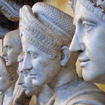Present Simple Tense, yes/no questions & short answers
Elementary, level
Description
Materials
Main Aims
-
Present Simple- yes/no questions &short answers
Subsidiary Aims
-
Listening and speaking
Procedure (45-59 minutes)
First of all, I begin the lesson by greetings say "hi! good morning everybody? I hope you are all well today". Then I will link to the previous lesson, the sentences used in ex 3 to lead into ex 4. Students do ex 4 alone. After they finish giving thier own answers I will put them in pairs to compare their answers.
To take their attention I will play a music video that is familiar to them to understand. This song is going to show them what they are going to learn. After that I will show some photographs, by using the projector, and ask questions about the pictures and take short answers. I will give one example first and the Ss will follow the example.
T wants the students to understand the structure. Because of this reason T explains the structure by writing them in the board like that ; T writes "do"in small letters and adds "I, you, we, they" in big letters, on the other side T writes "does" in big letters and adds "he, she, it" in small letters. Then the T explains; "as you see in the board "I, you, we and they" are very tall guys and "do" frightens of them. It is very small. On the other side we see "he, she, it" in small letters they are very young and small and they are afraid of "does" which is written in big letters.
The teacher wants the Ss to understand the structure of Present Simple questions.
T gives them a hand out and asks them to choose the correct answer in section A. Then the T wants them to check thier answers with thier partners. In section B, T wants them to write quesions properly and check the answers together. After they finish writing the questions T wants them to listen the dialogue and mark the questionsin section B yes(+) or no(-).
Since the T doesn't want them to study with the same partners he/she changes the partners. In section C, T wants them to ask and answer the questions in exercise B.
Finally T gives them a handout (section D) which they can write questions and SS gives answers personally. T wants the students to share thier answers with thier partners.

